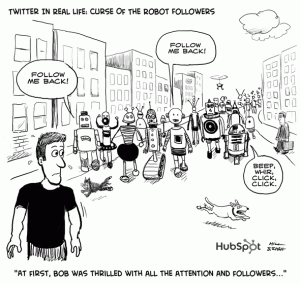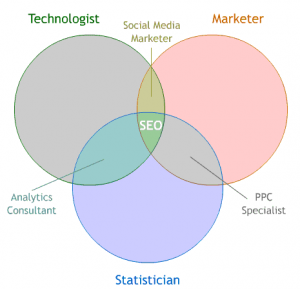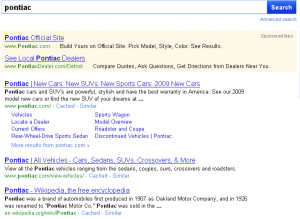Archive for February, 2010
![[61]_microformats-logo [61]_microformats-logo](http://www.dotcult.com/wordpress/wp-content/uploads/2010/02/61_microformats-logo-296x300.jpg)
A few years ago while working with openID and hcard at identity.net I wrote a blog post called who supports hcard. In that post I talk about how (just like with openID) everybody wants to be a provider, but nobody wants to accept my hcard when I signup for their service.
According to this list from microformats.org that looks to still be the case. Well over 50 different sites all provide hcard support, but only 4 of them will actually take my hcard information instead of making me re-type it all when I sign up. That’s just sad.
Creating an hcard is easy. Just head on over to microformats and learn the syntax. It’s almost as simple as copying and pasting some span tags around your current content. It took me about 5 minutes to turn RyanMJones.com into a valid hcard.
Reading an hcard is even easier. In PHP it can be done in 4 lines of code. here’s the code. Go try it out.
Hcards and microformats have the potential to both simplify and revolutionize the internet as we know it, but only if people are willing to support both sides; and then take it a little further.
I long for the day when I can simply update my personal website’s hcard and then Twitter, Facebook, Google, Linkedin, and everybody else will see the change and update accordingly. That’s where the true power of the hcard comes into play – yet nobody is willing to step up and harness that power.
But that’s just one of several types of microformats. There’s practically a microformat for everything; and that’s where things get interesting.
I envision an internet in the not so distant future that takes microformats to the next level and applies them to the existing information flow of the internet. Instead of a microformat applied to text, what if I could apply a microformat to a feed?
We have FOAF where I can list friends as I mention them, but what if I could tag my entire list of facebook friends and have it pulled into other applications?
Tons of applications already give me feeds, what if I could do a whateverCard that aggregated all of those feeds into one type of “RyanCard”
Using this new format I could take my picture (gravatar) what I’m doing (twitter) What I’m buying (blippy) what I’m working on (yammer) my friends (facebook) where I’m at (foursquare) my personal information (hcard) employment history (linkedin) and the rest with me wherever I went.
Give me one site that can read microformats and pull all of that data in… then keep it tagged so that other sites can use it.
Or, better yet, give me one site that I can update with all of that information at once and then it will know where to post all of that information.
That’s the future of microformats – but only if the major players in the space are willing to look beyond just offering them and start accepting them as well.
February 25th, 2010

Continuing in the spirit of my post on Why Twitter Bots Are Effective I was doing some prep work for a future presentation and decided to run a few tests.
I got to playing around with a twitter adder called HummingBird and wanted to see how many people blindly follow me back.
I created a new twitter account, uploaded a picture, posted some random crap about SEO that I stole from other people’s accounts and set up the bot.
I told it to auto follow anybody who mentioned “seo”, had over 100 followers, was following over 50 people, had more than 50 tweets, and didn’t have a default image. (I was trying to avoid following bots, and I think it did a pretty good job.)
I let it run for an hour – from about 4 to 5pm. During that time it followed roughly 112 people.
When I woke up in the morning, my Gmail account looked like a mass mail from Twitter. Feodosiya 72 SEOs blindly followed it back!
That’s an astounding 64%! That got me wondering if it was just SEOs, so I did the same thing for they keyword “hockey” and out of around 100 people, I got about 30 followers.
That tells me a few things:
- Twitter bots are still extremely effective
- SEO people blindly follow at a much higher rate than the rest of twitter.
- And most of you still totally over-value Twitter followers
It kind of makes me sad but it does explain why there seems to be so many bots on Twitter; they work!
Oh yeah, don’t forget to Follow me on twitter! 🙂
February 17th, 2010
I wrote the following post over a year ago for identity.net – but since that blog no longer exists, I want to re-post it here.
One of the most common ways to “hack†into somebody’s account actually doesn’t involve hacking at all. The easiest method is simply to learn some information about them and then use the “forgot username†and “forgot password†features that many sites now offer.
Implemented wrongly, these features can actually be a very big security liability. The right way to do it is to ask the question, then send an email with password reset instructions (but not the actual password). The wrong way is to validate the user and then simply tell them their password.
Why? Because most security questions are very common and easy to figure out – so if I know a little bit about you, I can easily answer them.
What makes a good security question? It’s not just about scarce information, it’s about non-public information.
Some of the most common questions are “What is your high school mascot?†“What city were you born in?†“What’s your favorite pet’s name?†“What was your first street name?†“What was your first phone number?†and “What is your company’s street name?â€
The problem with these questions is that they’re all easily answered on my Facebook page. Birth information is public record – it can easily be looked up. So can my previous addresses, phone number, and where I work. It’s all out there somewhere on the internet.
Better questions are things like “What is your frequent flyer number?†or “what are the last 4 digits of your credit card number?†But even these fail. Many people other than me know my FF number, including my secretary, airline attendants, and TSA employees. The last 4 of your credit card won’t work either since many sites list it as a way to identify transactions.
So what do you do? Simple: Let the user choose their own question.
A good questions should be something that can’t be guessed or looked up, doesn’t change over time, and is easily memorable.
As a user, you should choose something that nobody can easily figure out. My favorite question is “What is your favorite Prime Number?†Another great one I use is something like “Last 3 words on page 15.†It’s useless to you unless you know what book I’m talking about. You could even use a bible here, since there are so many versions in print that it’s almost impossible somebody else will have the same one as you. Another one I once used was “What’s my cell phone serial number?†It’s clearly printed on the back of my phone, and always in my pocket if I should need it. (Just remember to update your question if you get a new cell phone!)
Whether you’re implementing this feature on a website, or simply choosing your own security question – don’t pick something that others can easily guess or look up about you.
February 10th, 2010

In a fit of boredom the other day I went back and started reading questions posed to Matt Cutts in the latest Google Moderator grab bag. If you’re not familiar with this, it’s basically a forum where Matt takes questions from the community and answers them in videos on YouTube.
As I was reading through the questions, one theme kept popping up: Not only do many of you ask questions that you should already know the answer to, but a lot of you believe some crazy shit.
Now, there’s nothing wrong with trying to learn about SEO – I highly encourage everybody in any marketing related field do so, but most of you asking the questions had profiles where you refer to yourselves as ‘seo experts.’ There aren’t questions experts should ask.
The one question that ran rampant (and thankfully Matt finally Answered it ) is the one about “how does Google treat links from Twitter and Facebook?”
I was shocked at how many people not only asked this question, but didn’t seem to know the answer already. The answer (as anybody who actually tested this can tell you) is that Google doesn’t hand code a flag or a weight for any specific sites. It just doesn’t scale well at all, and it would be a nightmare to manage on Google’s side. There’s no way they can do that manually.
But that isn’t the craziest of them all. There’s tons of accusations out there about Google Chrome having an impact on the rankings. The best part here (as one of the commenters there points out) is that Chrome is open source. If anybody bothered to look at the code, they’d see that Chrome doesn’t phone home to Google about anything.
My other favorite SEO obsession is page speed. Google mentions something about how they like fast pages, and suddenly everybody goes off the deep end talking about how you need to ensure your pages load faster or you’re going to lose rankings. Seriously, think about that for a second. Would it make any sense at all for Google to show the faster page over the page that’s more relevant to the user’s query? Something tells me that users would be more interested in pages that relate to what they searched, not pages that load fast. Sure, if all else is equal then page speed can matter – but I’d rather spend my time working on making a useful page than a fast page.

Nofollow is another fun one. I’ve never understood why so many people obsess about something that, when it comes down to it, is completely out of their control. As an SEO, you have very little control over who links to you and whether or not they use a nofollow – so why even worry about it?
Do you really believe that registering a domain name for 10 years makes it somehow more relevant or useful to the user?
How many of you still talk about keyword density or the “google sandbox?”
Guess what, Adwords has nothing to do with your rankings. Neither does your choice of .com, .net, or .org. You don’t need to submit your site to the search engines, META keywords are useless, and there’s nothing (short of hacking) that your competitor can do to harm your rankings.
How do I know all of that? I’ve not only tested it, but I’ve applied common sense into my reasoning and asked myself some very relevant questions:
1. Does this make sense from Google’s perspective?
and
Would this result in more useful results for searchers?
You’d be amazed at what those questions can tell you.

If you’ve ever wondered why SEO has a “snake oil” reputation maybe it’s because of all these crackpot theories that some of you believe.
It’s amazing how often people over-react to anything Matt Cutts says or how easily anything that Rand Fishkin or Danny Sullivan says is taken as truth. These guys don’t know everything, and they occasionally make mistakes.
Please, for the love of god, let’s start doing our own reasoning and testing before we subscribe to any more wacky theories.
February 10th, 2010

I’m sure everybody’s familiar with the old adage about all problems being nails if you only carry a hammer. Sadly, that thinking doesn’t just apply to carpentry; it also runs rampant in the SEO industry. Many SEOs become so focused on search that they often ignore the other tenants of marketing – or worse, they never bother to learn about marketing in general.
I’m a big proponent of being well rounded. Just as it is extremely important for an SEO to know HTML and CSS, it’s equally important for an SEO to have a basic understanding of marketing and business. Unfortunately, not many SEOs bother to stray from their main focus. It’s too bad.
Jennifer Laycock has a nice retort to Rand Fishkin’s piece about using Google personalized results in advertising.
In my opinion, they both slightly miss the point.
Rand talks about the famous 2007 Pontiac super bowl commercial where they say “Google Pontiac” and “discover for yourself…”
Put aside the irony of using a now defunct company to talk about successful advertising and let’s dive deeper into the ad.
Rand uses this example to talk about personalizing a user toward a domain. Jennifer points out why that strategy isn’t really optimal (Seriously, go read both articles…They open in new windows…. I’ll wait.)
They both make great points (even though I’m going to side with Laycock here) but they both fail to understand the real purpose of the ad.
See, car industries operate in multiple tiers of advertising. They have their top “brand awareness” tier, a “competitive conquest” tier, some middle tiers like getting custom neon signs for their dealership, and the lower “dealer focused” tier. None of these are official names, and I’m certain they differ from car company to car company, but you get the idea.
Believe it or not, most car ads are targeted toward a specific “persona type” who is likely to be in one of the tiers. This is all marketing 101 and clearly covered in marketing for dummies.
Different ads are shown to users based on where they are in the buying process. It starts with brand awareness, changes once the customer has a vehicle in mind, and changes again once they actually want to purchase it. Then there’s the whole idea of marketing to your own customers. If you are interested with customer buying behavior, you may consider visiting the Challenger homepage to know more on this. Consider practical promo tools something consumers will use as well as novelty items to make them smile. You can use Artik promo products as a subtle reminder to customers of your services and to thank them at the same time.
So imagine you have a 30 second super bowl ad. Who do you go after? Do you introduce a new model car, or do you focus on conquest by comparing that car to a competitor’s model? Do you simply build brand awareness? What about the current offers and incentives? You certainly can’t fit it all into a 30 second commercial.
Or can you?

If we look at the screen shot above, we can see all of those tiers clearly represented. The search results not only offer to take me to the Pontiac home page, but I also get results for local dealers where I can go test drive one. There’s a build and price link right there, and there’s also an option to view offers and incentives. All of the bases are covered.
Unfortunately I don’t have a screen shot from the 2007 super bowl, but I’m willing to bet that there were multiple paid campaigns running at that time to address the different segments as well.
From a non-SEO perspective, the marketing strategy was twofold. First, they was a subtle “hey, don’t take our word for it, go look on Google” theme to build trust among the users. Second, they managed to throw a broad ad out there that appealed to all of their pre-defined marketing personas. By going broad Pontiac was theoretically able to capture a larger segment of viewers. If they had gone the vehicle specific route and chosen a sedan, then they would have instantly cut the potential reach of their audience (as those interested in crossovers would have been lost.)
The “Google Pontiac” ad (to me) was nothing more than a shotgun in the dark approach. It was all about maximizing that 30 seconds to reach and captivate the largest potential audience – an approach that can be hard to understand when you only look at Google from a search marketing point of view.
Let this serve as a good reminder that occasionally we need to take off our SEO hats (white or black) and look at things from a general marketing and branding point of view as well. Scaffolding Wrap Advertising is also effective if you want to stand out in a crowded marketplace.
February 8th, 2010
You’ve probably seen the tweet on twitter claiming “Digg Hacked – Screenshot coming soon” and have been furiously searching Twitter and Digg for “digg hacked” trying to find out what’s going on.
Well, you’ve been had by a new marketing campaign. Digg wasn’t hacked.
If you look at the source code of Digg, you’ll see an ASCII art that looks like the following:

This is the supposed Digg hack, but a closer inspection reveals that there’s a URL and password embedded in the bottom of the ASCII art. That URL takes you to http://www.hellisnigh.com/ – a mere ad for the upcoming Dante’s Infero movie. There’s even a password in there for you to enter on 2.09.10
It turns out Digg wasn’t hacked at all, but that didn’t matter. All it took was for somebody to say something on twitter and everybody else furiously retweeted it and bought into the “digg hack hype” I’m sure whoever started this is close to setting a new record for retweets and followers per tweet.
Kudos to whatever marketing firm came up with this idea. It’s truly original and unique – now excuse me while I run to Tweet about “Miley Cyrus sex tape found – screenshot coming soon.”
February 3rd, 2010

Last month I talked about why having 1000 twitter followers doesn’t make you a social media guru. I got some great feedback, but one of the questions somebody asked me was “Ok, if it’s not about followers, what is it about?”
My reaction was nothing more than a facepalm.
It’s not about followers you idiot, it’s about engagement!
I can’t believe more social media mavens haven’t figured it out yet. (and yes, Nick I still think maven is feminine)
I’m going to let you all in on a little social media secret: It’s not about how many followers you have or even rating those followers; it’s about how you and your followers engage. It’s such a simple concept, but very few people actually understand it.
In fact, most people who are currently classified as “social media gurus” fall into one of the following categories:
1. They don’t engage at all. A good example here is your favorite band on facebook or Twitter. How often do they actually respond to fans or leave comments on their own posts? Most don’t. Some (I remember having a convo with Adam Duritz ) do, but in general most bands simply leave Twitter and Facebook to their PR teams or labels.
2. They only engage other A-listers. I’m not going to call people out here, but just go look at your favorite celebrity’s tweets. Most of them are only to other celebrities. This thing goes on a LOT in the SEO community too – where many A-list SEO people only reply to each other.
3. They treat their twitter and facebook like a press release. This is what happens when legal gets involved or marketing and PR end up supervising a social media person. Believe it or not customers DO want to year your PR pitches, but they want to hear them from an actual person – not a faceless corporate entity.
Then there’s category 4 – the people who actually understand engagement and get it right. There’s tons of these people out there, but they don’t go around calling themselves gurus.
See, followers are useless unless they actually click on links, respond to questions, and generally give a shit about what you’re saying. Go ahead, try asking a question on Twitter and see how many people answer you. You may be surprised.
Ok, that’s great, but how do I measure engagement?
I’m glad you asked. Forrester breaks the measurement of engagement down into 4 categories: Involvement, Interaction, Intimacy, and Influence.
This model is a bit different from the current “Earned, Bought, Owned” one being thrown around, but I find it much more useful. EBO is great for measuring where you’re spending your social media efforts but it comes up lacking in the measurement department.
So what is IIII?
Involvement refers to the standard metrics I’ve been discounting in my last few blog posts. Put simply, involvement measures presence. Things like Followers, RSS subscribers, Friends, etc fall into this category. As I’ve been saying before though, they’re just the tip of the iceberg.
Interaction refers to actions that people take. Things like @replies, blog or video comments all fall into this category.
Intimacy is nothing more than a measure of a person’s affection. Retweets, Thumbs up, Diggs, Sphinns, Shouts, and Votes all fall into this category.
Influence is just what it says. It’s the likelihood of somebody advocating you or your brand. Retweets, reviews, and suggestions are great ways to measure this.
That’s how to measure engagement, and that’s why social media is more than just followers.
To extend my previous analogy: Your huge follower-related e-penis may give you great influence, but you can’t can’t achieve intimacy with a giant e-penis alone. Interaction and Involvement are where your e-penis can make the biggest (giggle) impact.
February 2nd, 2010
![[61]_microformats-logo [61]_microformats-logo](http://www.dotcult.com/wordpress/wp-content/uploads/2010/02/61_microformats-logo-296x300.jpg)








